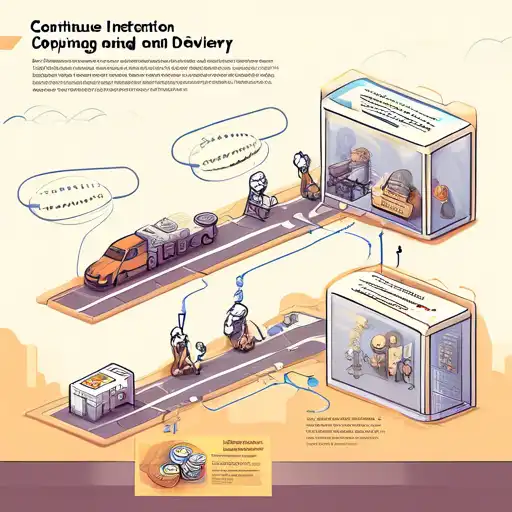What is Continuous Integration and Delivery?
Continuous Integration (CI) and Continuous Delivery (CD) are pivotal practices in the modern software development lifecycle, aimed at improving software quality and speeding up the release process. CI/CD automates the integration of code changes from multiple contributors into a single software project, ensuring that the software can be reliably released at any time.
The Core Principles of CI/CD
At its heart, CI/CD is about automating the software release process. Continuous Integration focuses on integrating code changes frequently, at least daily, into a shared repository where automated builds and tests run. Continuous Delivery extends CI by ensuring that the software can be released to production at any time, with the push of a button.
Benefits of Implementing CI/CD
- Improved Code Quality: Automated testing catches bugs early in the development cycle.
- Faster Release Rate: Automation speeds up the process from development to deployment.
- Reduced Risks: Frequent code integrations and testing reduce the chances of major failures.
- Enhanced Team Collaboration: CI/CD encourages more transparent and collaborative development practices.
How to Get Started with CI/CD
Implementing CI/CD requires a cultural shift within the organization, alongside the adoption of the right tools. Start by integrating small, incremental changes to the codebase frequently. Use tools like Jenkins, Travis CI, or GitHub Actions to automate the build and test processes. For Continuous Delivery, tools like Spinnaker or Argo CD can help automate deployments.
Common Challenges and Solutions
While CI/CD offers numerous benefits, teams may face challenges such as resistance to change, integration complexities, and maintaining test environments. Overcoming these challenges involves fostering a culture of continuous improvement, investing in training, and selecting tools that integrate well with your existing infrastructure.
Best Practices for CI/CD
- Maintain a Single Source Repository: All code should be stored in a version-controlled repository.
- Automate the Build Process: Ensure that the build process is fully automated and can be triggered by any code commit.
- Test in a Clone of the Production Environment: Testing should be done in an environment that mirrors production as closely as possible.
- Make Every Commit a Potential Release: With CD, every change that passes all stages of the production pipeline is a candidate for release.
Adopting CI/CD practices can significantly enhance the efficiency and reliability of software development and deployment. By automating the integration and delivery processes, teams can focus more on innovation and less on the mechanics of software releases. For more insights into DevOps practices, explore our latest trends in DevOps.
